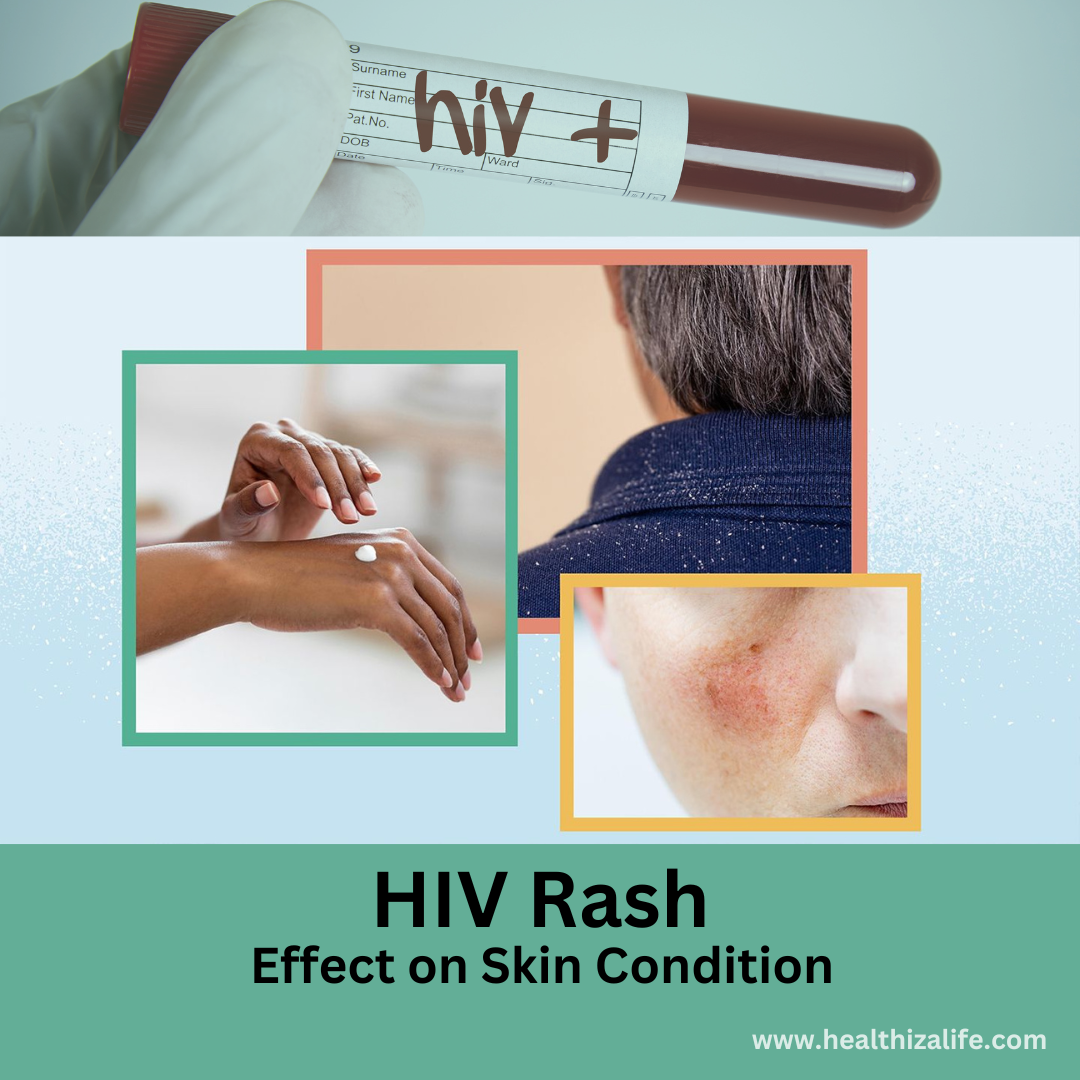HIV Rash and Its Symptoms
What is HIV Rash?
An HIV rash is inflamed skin that affects those who have the HIV infection. It could be uncomfortable, irritable, or red or purple. Although it can appear anywhere, it frequently does so on the chest and face. Some HIV drugs might also result in rashes, even severe ones.
HIV symptoms like a rash typically appear within the first two months of getting the infection. Similar to other early signs of HIV, this rash is simple to confuse for a sign of another viral infection. Therefore, it’s crucial to understand how to recognize and handle this rash.
What kind of rash is associated with HIV?
The form of folliculitis that affects those with HIV and AIDS is eosinophilic folliculitis. It results in bumps on the upper body and face. The type of germ determines the course of treatment. Yeast infections are managed with antifungal creams or tablets.
Skin Changes
90% of HIV-positive individuals, according to a study, have skin symptoms and alterations at some point throughout the course of the illness.
HIV-related disorders may cause the rash to appear, or antiretroviral drugs (ART), which are used to treat HIV, may induce it as a side effect.
How does HIV rash start?
Seroconversion, which causes a rash, can be an early indicator of HIV. This is the acute, or early, stage of HIV infection, which typically starts 2–4 weeks after virus exposure.
HIV impairs immunity, raising the possibility of infections and skin diseases that could result in a rash on the face. Additionally, some drug side effects include rashes.
The body creates anti-HIV antibodies during the seroconversion or acute HIV stage. At this stage, the majority of HIV-positive individuals—between 50 and 80–90%—have flu-like symptoms, and some may also get a rash.
It is painful
HIV can occasionally merely create a rash, but because HIV affects the immune system, there are frequently additional symptoms as well.
A rash is an inflamed region of skin that is occasionally red, itchy, and painful too
HIV rash and symptoms
If you experience a rash, let your doctor know. HIV can slowly but steadily destroy the immune system. Even a rash that doesn’t seem serious can be an indication of a dangerous illness that has to be treated right away.
What to look for?
People with HIV are more susceptible to infections due to immune system damage, and it is a common indication of infections.
The rash normally manifests as a red, flattened region of skin that is typically covered in little red bumps, whether it is brought on by HIV drugs or by HIV itself.
Itching is a key sign of the rash. It can show up anywhere on the body, but it mostly affects the face, chest, and occasionally the hands and feet.
Rash treatments
Skin disorders are now less severe and less frequent thanks to improvements in virus prevention and immune system preservation. Additionally, HIV-related skin issues are now more easily treated.
Medication is the most used method of HIV management. Depending on the rash’s underlying cause, over-the-counter medications such as diphenhydramine (Benadryl) and hydrocortisone cream may help lessen itching and the size of the rash. Rashes that are more severe can need prescription medicine from a doctor.
HIV treatment
HIV is not completely cureable but you can manage it with proper medication and some lifestyle changes. There are many medicines available to manage this infection effectively. Some of them are given below.
Lifestyle changes
In addition to medication, making a few lifestyle adjustments could assist with the moderate type of this rash’s symptoms. Keeping out of the heat and the sun can help with some rashes. Baths and showers that are too hot can aggravate the rash.
It is possible for a rash to appear in conjunction with the use of a new medication, soap, or food. An allergy can be blamed in this situation.
When to seek help?
Anyone who is unsure of the reason for their rash and believes they may have been exposed to HIV should consult a healthcare professional. Tell them about any skin changes you’ve experienced. This will assist the medical expert in making a diagnosis.


